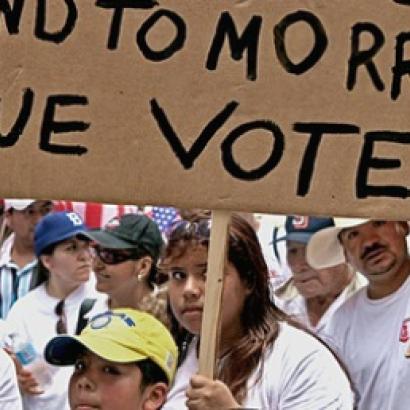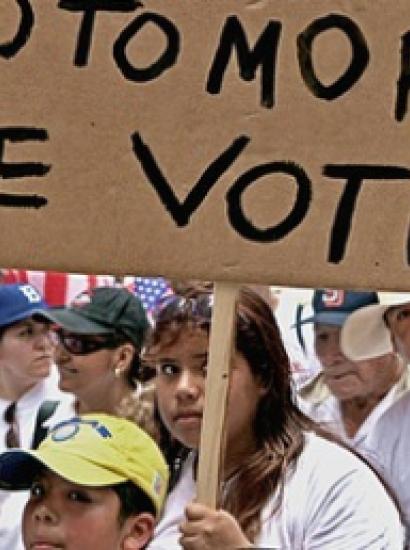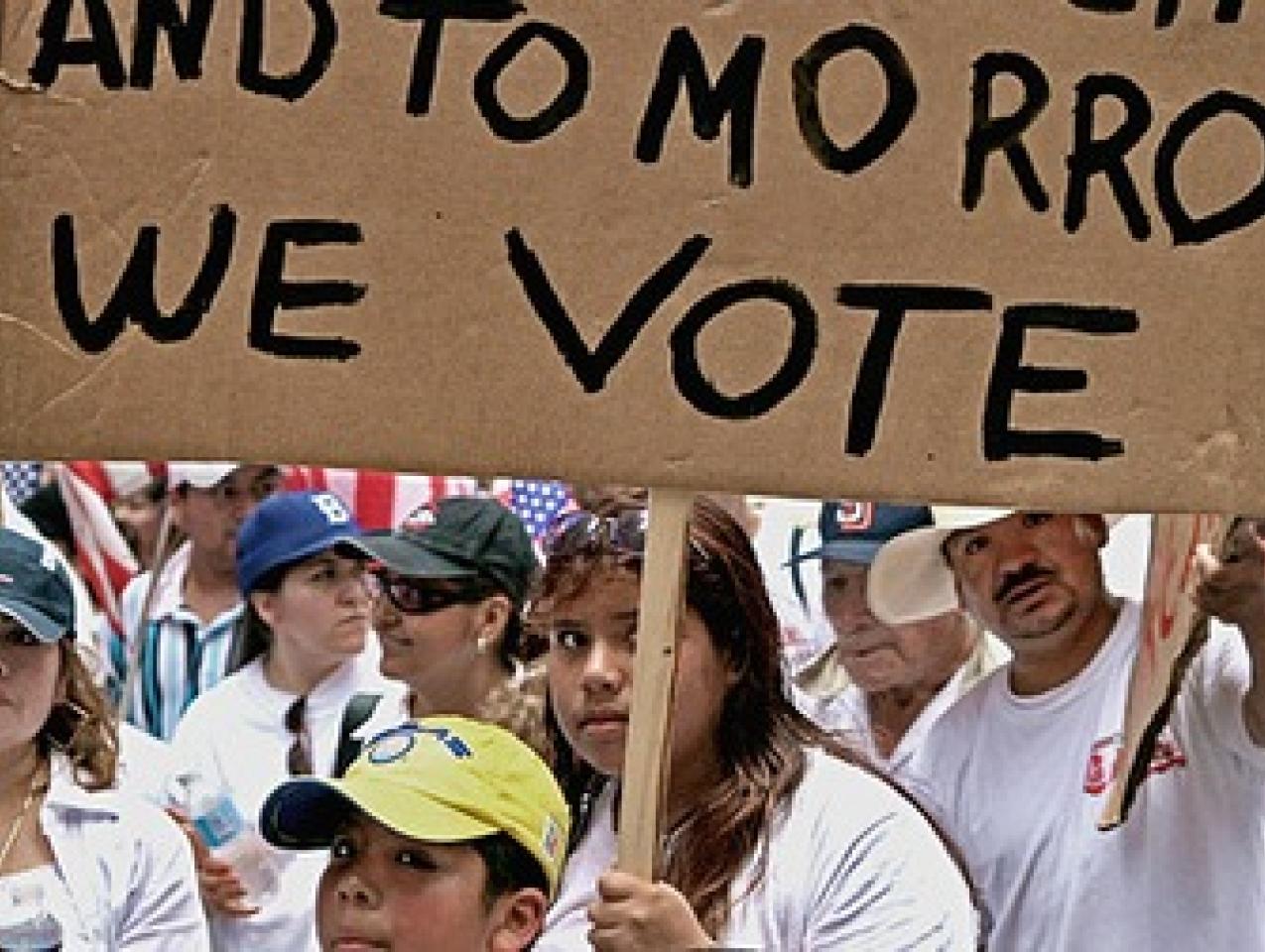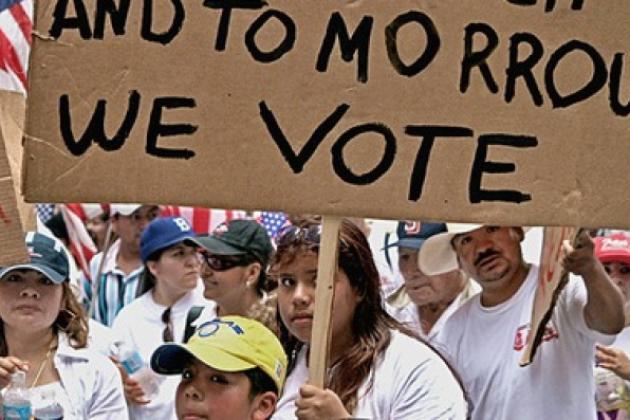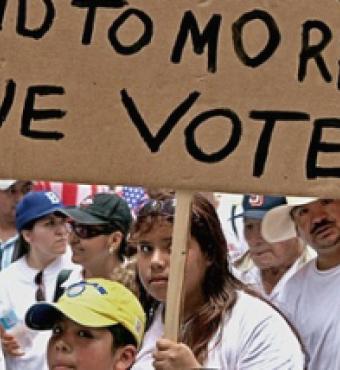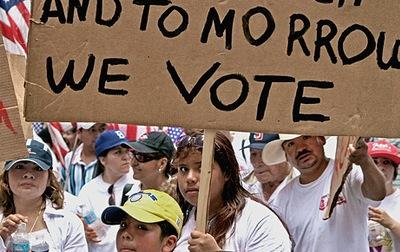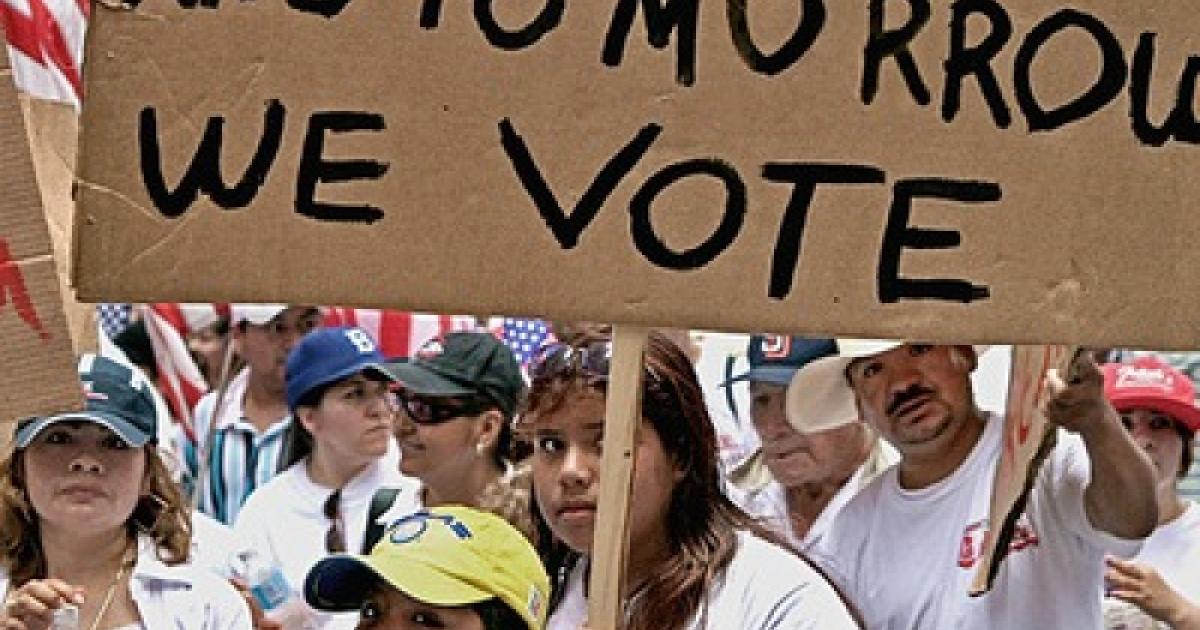- Politics, Institutions, and Public Opinion
When President Barack Obama’s re-election campaign swung into full gear in the spring, it began by releasing a video highlighting “voters like you.” Among the choices for this slice of Americana were a white man from North Carolina, an Anglo woman from Colorado, and a Latina from Nevada.
As with most things political and presidential, this was not a random sampling.
In order to spare himself the indignity of finding a new job come January 2013, Obama needs to reconnect with independent white males like those who reside along North Carolina’s I-85 corridor—a hotly contested political boundary that helped deliver the Tar Heel State to Obama by a mere 14,000 votes, or 0.3 percent, in the last presidential election.
Colorado likewise is a purple “swing” state that both political parties covet. The 2012 Democratic ticket will need a repeat of the 2008 gender gap—Obama receiving 56 percent of the women’s vote—to atone for the president’s soft numbers with the aforementioned white males.
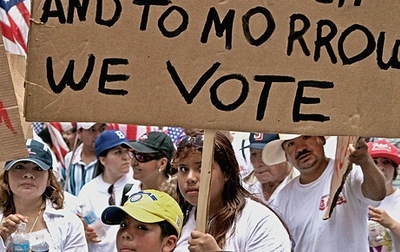
Photo credit: nybri (via flickr)
As for that Nevada Latina: let’s simply call her the future arbiter of presidential elections. That “future” is up for grabs in the 2012 election.
The reason? America’s changing demographics.
According to the U.S. Census Bureau’s 2010 results, the nation’s share of the non-Hispanic white population declined from 69.1 percent in 2000 to a present 63.7 percent in 2010, with America’s minority population rising from 30.9 percent in 2000 to 36.3 percent in 2010. Twelve of the nation’s 50 states have a minority population exceeding 40 percent—triple the number of such states in 2000. Four states—California, Texas, New Mexico and Hawaii—now claim “majority-minority” status.
The reason for this population shift is Latino-Americans, who now are one-sixth (50.5 million) of the national population, compared to one-eighth (35.3 million) a decade ago.
This political and demographic phenomenon is not limited to America’s border states, with their pre-existing Latino populations. Latinos represented a majority of the population growth in 18 states. They accounted for at least 40 percent of the population growth in seven other states, and at least 30 percent of the population growth in another five states.
Twelve of the nation’s 50 states have a minority population exceeding 40 percent.
Yet, despite this rising tide there’s a huge disconnect between the population growth and the results at the polls. Simply put: Latinos don’t fully flex their political muscles.
In the last presidential election, the Hispanic vote constituted only 9 percent of the overall electorate. Yet Hispanics account for 14 percent of the nation’s adult population. In 2010, Latinos accounted for only 6.9 percent of the vote. In 39 states that year, less than 5 percent of the vote was Hispanic. Only in New Mexico, California, Arizona, Texas, and Florida did Hispanics make up more than 10 percent of the electorate.
What this means is that there is the potential for large future increases in the Latino electorate. This will likely take place slowly but surely as the Latino population changes demographically. It is a young and relatively uneducated population, and such a profile leads to poor turnout. However, electoral engagement should increase as Latinos age and become more educated.
For the Republican Party, this presents a challenge, beginning with how to interpret its declining fortunes among Hispanic voters in recent times.
In 1984, Ronald Reagan received 37 percent of the Hispanic vote. Two decades later, George W. Bush, running on a Texas-grown record of inclusiveness, boosted that figure to 40 percent. But in 2008, Arizona Sen. John McCain received only 31 percent of the Hispanic vote. That doomed his chances against Obama.
The question for Republicans is how much of that drop-off was personal to McCain and how much had to do with conservatives being stereotyped as anti-immigrant?
In the 2010 midterm election, GOP candidates received 38 percent of the Hispanic vote, up from 30 percent in the 2006 midterm. Should that rise be credited to strong GOP candidates, a weakened president and Democratic Congress, or an election year in which economic stagnation and frustration with America’s body politic displaced social “wedge” issues as the main topics of conversation?
As for Democrats, the challenge is to take the rising minority population and convert it into votes, plain and simple. If that happens, Obama’s path to victory in 2012 becomes much easier.
Taking the results from the 2008 election, adjusting for the new Census figures, and assuming that the minority-share of the national vote stays on course to be an expected 28 percent of next year’s turnout, here’s what the presidential math looks like in three pivotal states, according to the National Journal:
—Obama could win Florida with only 40 percent of the white vote (he got 42 percent last time)
—He would carry Pennsylvania with 41 percent of the white vote (he got 48 percent in 2008)
—In Virginia, the purest of toss-up states given its even party split among registered voters, Obama would need a mere 33.5 percent of the white vote (down from 39 percent in 2008)
This is one reason why Republicans should not gloat over Obama’s recent misfortunes: if the president can mobilize the minority vote as effectively as he did in 2008, when he garnered 365 electoral votes and 29 states—14 electoral votes fewer, but two more states and 24 million more votes than Bill Clinton in 1996—he may yet be able to grind out the requisite 270 electoral votes and a second term.
As it stands, Latinos don’t fully flex their political muscles—but that may soon change.
And if Republicans look down the road, past the next census and on to future presidential elections, there’s serious cause for concern—beginning, of all places, deep in the heart of Texas.
In March, in a series of closed-door meetings in Austin and Dallas, Obama 2012 campaign manager Jim Messina predicted that the president would make a “serious play” for the Lone Star State’s 38 electoral votes. Few took him seriously, especially when polls showed Texans giving the president a 57 percent disapproval rating.
Though Texas is one of American’s four minority-majority states, it would seem to be reliably Republican. Only once in the last 10 presidential elections— Jimmy Carter in 1976—has Texas gone blue.
The McCain-Palin ticket carried the Lone Star State by a comfortable 11.8 percent. Texas was one of only two of the nation’s 10 most populous states that Obama failed to win (the other being Georgia, which McCain won by 5 percent). Obama did carry 63 percent of Texas’ Latino vote, which may sound impressive but actually was sub-standard. He won 78 percent of the Latino vote in New Jersey, 74 percent in California, and 67 percent nationwide.
However, the demographics show that the Texas population is changing. The Texas of 2010 is not the Texas of 2000—and it certainly won’t be the Texas of 2020 in how it looks and, presumably, how it votes.
Over the past decade, Texas has added more than 4.2 million residents, a 20 percent population increase. Hispanics, who now constitute about 38 percent of the Texas population, accounted for 65 percent of the state’s growth since 2000. By contrast, non-Hispanic whites grew just 4.2 percent.
Texas added nearly 1 million children under 18 in the past decade—and 95 percent of them were Hispanic. For the first time in Lone Star history, Hispanics make up the majority of the 4.9 million kids enrolled in Texas public schools, pre-kindergarten, and early childhood education.
What happens when those students reach voting age?
The answer: a Democratic electoral base that Republicans may not be able to overcome.
Turn Texas from red to blue, add it to the current Democratic strongholds of California, New York, and Illinois—four states totaling 142 electoral votes in the 2012 election—and Republicans would have to pick up 70 percent of the available electoral votes in the remaining 45 states to win the presidency.
Does Obama stand a chance in Texas? With the changing demographics, he may.
Then again, Texas already has a big role to play in the current election. It comes in the form of its governor, Rick Perry, now a presidential candidate and favored, by some, to be the GOP nominee in 2012.
Perry and his political handlers go to great lengths to point out that he’s not an avatar of George W. Bush, his predecessor as Texas governor. But on one issue, there’s common ground—and it could be the key to Perry defeating Obama. Like Bush, Perry has amassed an immigration record that’s hard for Democrats to negatively stereotype.
Perry’s Texas record shows that he: (a) allowed undocumented students to pay in-state tuition at Texas state universities; (b) rejected the effectiveness and rejected the use of the federal E-Verify system to check the legal status of job applicants; (c) and criticized Arizona’s controversial immigration law as not “the right direction for Texas” to go in.
These facts may not play well in Republican primaries, where conservative policies are favored, but they will appeal to more moderate voters in a general election. So perhaps it wasn’t a coincidence that, less than two weeks after Perry entered the race, Obama offered a large olive branch to Latino voters when he announced that his administration would halt deportation proceedings on a case-by-case basis, taking into account such variables as children enrolled in schools and family members serving in the military. This was a major switch for the president: for months, he had claimed he didn’t have the authority to halt deportation proceedings.
The gesture was notable in that Obama’s relations with Hispanic voters are rocky: he reneged on a promise to take up immigration reform in his first year of office; he couldn’t deliver a federal Dream Act while Democrats controlled both chambers of Congress; Hispanic unemployment remains above the national average (11.3 percent as of the summer).
Poll numbers confirm Obama’s uneasy footing among Hispanic voters: for the first five months of 2011, Gallup Daily Tracking has shown that Obama’s Hispanic support has fallen from 69 percent to 57 percent, while his support among blacks and whites remains unchanged (91 percent and 41 percent, respectively).
For Republicans and Democrats, the presidential overture on deportation was the latest in a series of moves meant to appeal to Hispanic voters. Earlier in the summer, Crossroad GPS, a GOP non-profit, launched a $5 million TV campaign in Orlando and Miami assailing Obama’s economic record. Florida is a tempting target for the GOP. Obama received only 55 percent of the state’s Hispanic vote in 2008, and Republican Senator Marco Rubio earned 57 percent of the Hispanic vote in his 2010 victory (which is why some see Rubio as the second half of the GOP ticket in 2012). Soon after the GOP launched the Florida TV campaign, the Democratic National Committee ran TV spots, also in Spanish, accusing Republicans of wanting to end Medicare. And shortly after that, Republican National Committee radio ads again hammered the president on the economy and Hispanic unemployment.
Of course, the summer of 2011 is a political eternity away from the fall of 2012. By that time, Republicans will have gone through a series of primaries during which Rick Perry and the other lead GOP hopefuls will face pressure to conform their immigration stances to the right. President Obama, meanwhile, must straddle the fine line between shoring up a political base and overt pandering.








